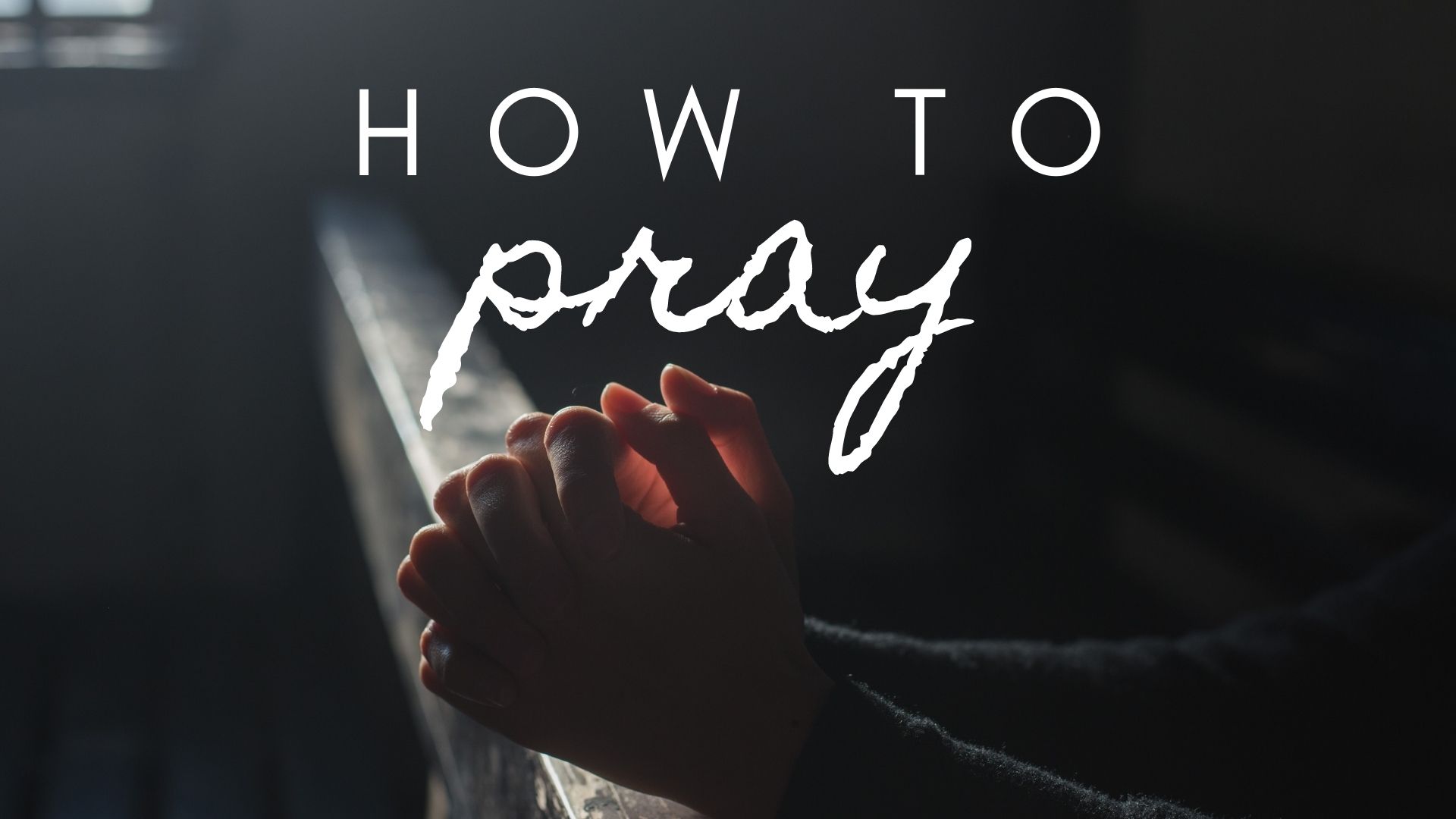Prayer: What? Why? When? Where? Who?
Prayer is a spiritual discipline that every believer should have in their life. But how do you do it? Let's get practical for those who want to learn to pray.
Talking Points:
- Prayer is simply communication with God. If you want a healthy relationship with God (or anyone), you’ll have to learn to communicate.
- We should pray to nurture our relationship with God. Beyond that, we should pray because God is worthy of our attention and focus. We should set apart some intentional, focused time to pray every day or week. 1 Thessalonians 5:17
- Prayer is often personal, a one-on-one connection with God. But it can also be corporate – prayer with two or more people is powerful and effective. Matthew 18:20
Discussion:
- Initial reactions to this topic? What jumped out at you?
- On a scale of 1-10, rate your prayer life. Explain.
- What usually comes to mind when you think of prayer? Did anything catch your attention in this video?
- Describe a time in a relationship when communication stopped. What happened to the relationship? Have you ever experienced that with God in prayer?
- Why is God worthy of our attention? Make a list.
- Read 1 Thessalonians 5:17. Which is easier for you: praying throughout the day or praying intentionally at a specific time? Explain.
- Do you think a “prayer closet” would be helpful for prayer? Where could that be in your life?
- Read Matthew 18:20. Do you ever pray with others in your life? Describe it.
- Is there a step you need to take based on today’s topic?
The Mechanics of Prayer: The P-R-A-Y Method
Looking to grow in your personal prayer life? Try this four-step method to bring a simple, biblical structure and focus to your prayer time.
Talking Points:
- P=Praise. Start by praising God: telling him who he is to you and what you are thankful for. This will get your heart in the right place as you begin connecting with God in prayer. Psalm 100:1-5
- R=Repent. Next, move into a short time of repentance: admitting to God your faults and allowing him to convict you of the things that are wrong in your life. This is the natural response of a sinner in the presence of a sinless God. Isaiah 6:1-5
- A=Ask. Prayer requests are what most people think of when they envision prayer, and that’s the third step in this method. Paul teaches us that we should confidently present our requests to God. Philippians 4:6
- Y=Yield. The final step is to spend some time yielding to God: stopping and quieting your heart to hear from God. This is probably the most difficult step in prayer, but it’s worth the effort to make it a habit.
[Related: Prayer – What? Why? When? Where? Who?]
Discussion:
- Initial reactions to this topic? What jumped out at you?
- What are some helpful things you’ve learned about prayer? Have you ever tried the P-R-A-Y method? Which step seems the hardest to you?
- Read Psalm 100:1-5. Make a list of the things you can praise God for in your life, past and present.
- Read Isaiah 6:1-5. Describe Isaiah’s response to God. Why do you think he responded like this?
- What is the benefit of repentance in your prayer life? How will confessing things to God affect your relationships in life?
- Read Philippians 4:6-7. What are the commands in this verse? What are the promised benefits? Discuss.
- What does it mean to “yield” to God in prayer? Try to list some practical steps for developing this habit in your prayer life.
- Read Luke 18:9-11. Talk about the irony of the Pharisee’s prayer. What is the true heart of prayer?
- Is there a step you need to take based on today’s topic?
- What’s the Best Way to Wait on God? (Acts 1:12-26)
- How Should You Pray in Your Hour of Need? (Mark 14:32-42)
- How To Pray For Breakthrough
- The Mechanics of Prayer: The P-R-A-Y Method
- The Secret to Overcoming Anxiety
- How To Pray When You Hit Rock Bottom Like Jonah
- How to Pray for Your Family
- What’s the Deal with Anointing Oil?
- 5 Tips for a Manly Prayer Habit | Point Man #6
- The Secret to Overcoming Anxiety
- Spiritual Respiration and the Christian Life
- How To Pray When Life Gets Hard
- Practicing Biblical Meditation
- Does God Still Heal People?
- The 4 Ways God Answers Prayer
- How to Uncomplicate Your Prayers
- You’ve Tried Fighting with Everything But Prayer
- Communicating with God
- How to Pray for the People You Mentor
- Take the 40 Day Prayer Challenge for Couples
- What Is Lent?
- Why We Pray
- 5 Things to Remember When Praying to God
- Using the Lord’s Prayer as a Pattern for Prayer
- A Better Way to Pray | Get Rich #5
- When God Is Silent
- Drive Along Prayer Tips
- How Can I Have a Fruitful Life?
- Moving Beyond Mediocrity | Get Rich #2
- What Are the Spiritual Disciplines?
- War Room: Fight for Your Marriage
- How to Pray in Your Time of Deepest Need
- Studying the Bible: The S-O-A-P Method
- Prayer: What? Why? When? Where? Who?
- Why Pray If God Knows Everything?
- How to Overcome Worry


